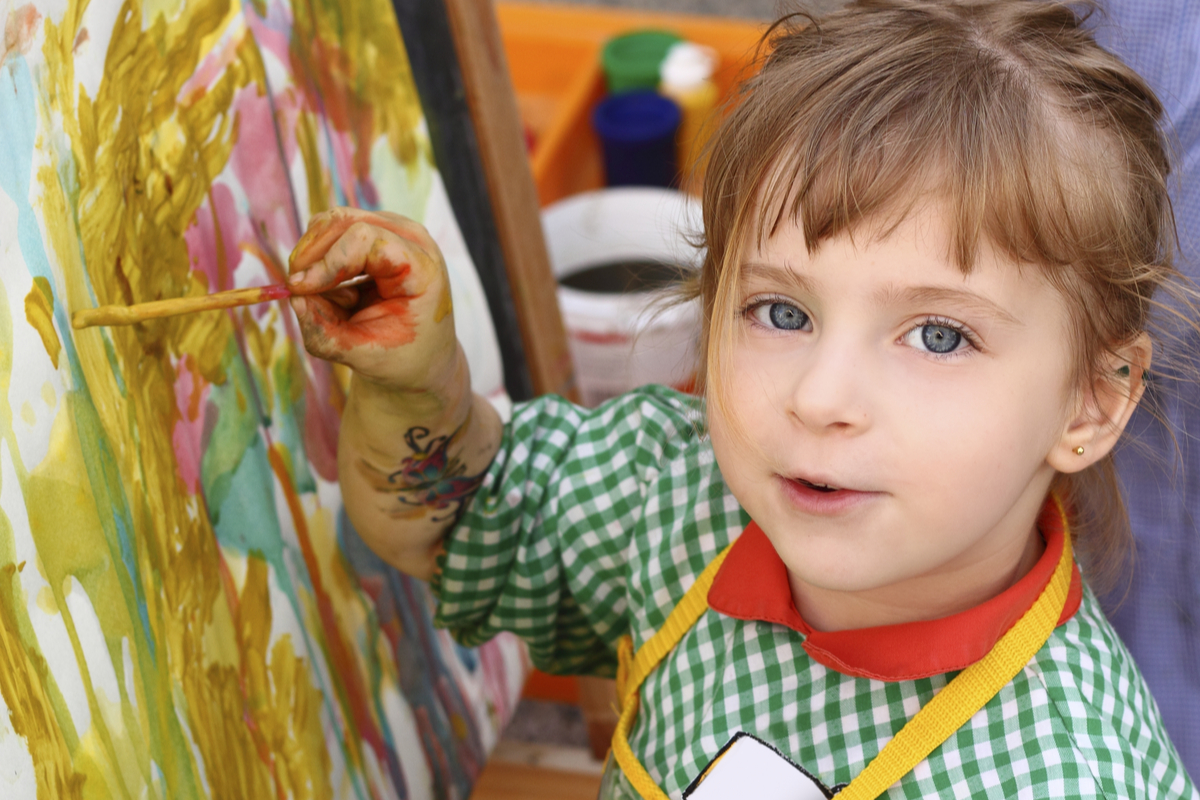Back in the day, the refrigerator was the hall of fame for the home. Report cards, photographs, awards, and of course, artwork were often the center of attention on the fridge. Today with most things going digital, the refrigerator isn’t necessarily used for display, and with good reason. Those magnets mom used to use do not hold much, especially when it comes to art projects.
There’s an abundance of amazing craft ideas for kids – and whether they’ve come up with these on their own or they’ve taken inspiration from some outside source – your little ones have most likely created a multitude of colorful splashes and strokes and etches at home, school and camp. Children love to see their artistic creations take center stage and child art displays are a fun way to brighten up a space. Unfortunately, the amount of artwork kids generate, especially in families with more than one child, is enormous. Let’s face it. The refrigerator just isn’t that big, which is why you need creative and attractive ways to best display kids’ artwork around the home that delivers on function and style.
Now, don’t worry. The internet does not have a shortage of innovative ways to display children’s artwork. We’ve made it a snap to find the best ways to display kids’ artwork, whether you have a lot of space or a little.

Frame it
Putting a child’s artwork into a frame is a fantastic way to make a whimsical wall arrangement. You can go a couple of different ways with frames. An inexpensive way is to hit the dollar store and pick up a bunch of frames. Remove the matting and glass. Attach your child’s latest artistic endeavor with removable putty. Using putty instead of glue or tape allows you to quickly change the work of art in the frame. Make an eclectic arrangement on the wall with the frames featuring the kids’ artwork. The result is a charming display that can be easily switched up as the seasonal projects roll in. Floating shelves are another option for highlighting artwork frames.
Storage frames solve the problem of what to do with the artwork when you take it down. A storage frame opens from the front and comes with built-in storage. Some storage frames can hold up to 50 pieces of kids’ artwork and are often sold in sets of two.
If your child inherited their artistic flare from you, paint some frames on the walls of your child’s room. Then, use the space inside the frames to display their artwork.
Hang it
The kitchen isn’t the only spot in the house to display kids’ artwork. Playrooms, family rooms, and children’s rooms are perfect picks for showcasing children’s creative works. With a little ingenuity, you can find clever ways, even if space is a challenge.
Corkboards work well and can be hung on bedroom doors to highlight special art projects. Another way to give multiple projects a prized spot in the home is by hanging a clothesline. Teachers have been using this art display trick for a while. Run a clothesline across the playroom wall or even in a hallway, and you have an instant art gallery wall. All you need is some bright clothes pins to clip the artwork to the line. Use colored clothespins to add to the fun design. Instead of a horizontal clothesline, you can go vertical with hanging wire. Cut the desired length of wire and attach it to the wall using small self-adhesive hooks. Hang up one wire or more if you have a lot of kids’ artwork to display or allot one to each child. Artwork can be held into place with clips or powerful magnets.
If you want to get your creative juices flowing, transform skirt and pants hangers into frames. You can use the pants hangers as is and slip your child’s latest painting or project in. Dress them up by using colorful Painters Tape. You can then make a gallery-style display on the wall in the playroom or your child’s room.
Not a do-it-yourselfer? That’s okay; not everyone is. You can look like a DIY expert by using wall-mounted displays specifically designed and sold to hang children’s artwork. Several options on the market are variations of the clothesline and hanging wire creations. These kits come complete with clips.
Book it
Another cute way to display your child’s artwork and create a treasured keepsake is to make their masterpieces into a book. If you love to scrapbook, take your child’s projects and turn them into an annual scrapbook of all their school year collections. For a more digital approach, check out apps like Artkive that do the work for you.
Chalk it
This nifty DIY project made the rounds on social media, and it certainly is innovative. Using magnetic paint, you can turn an entire wall into a giant art gallery. Of course, you don’t have to do an entire wall. You can choose a section instead. Since the paint is magnetic, you can hang children’s artwork using magnets. Painting experts recommend multiple coats if you decide to create a magnetic chalkboard wall to display artwork.
Whatever way you choose to display your child’s artwork, the end result will bring a huge smile to your child’s face and yours. Showcasing children’s artwork is a wonderful way to bring color and texture to empty spaces in your home. Kids’ artistic creations are always attention-getters, especially when family comes to visit.
Need more inspiration for outdoor painting activities? Check our ideas on easy sidewalk chalk art for your kids.



